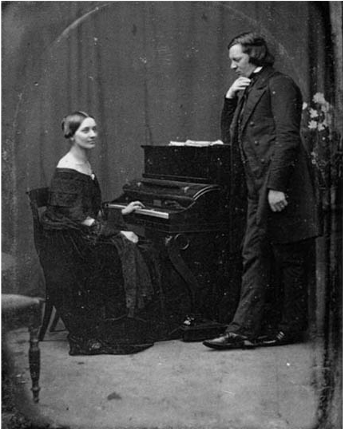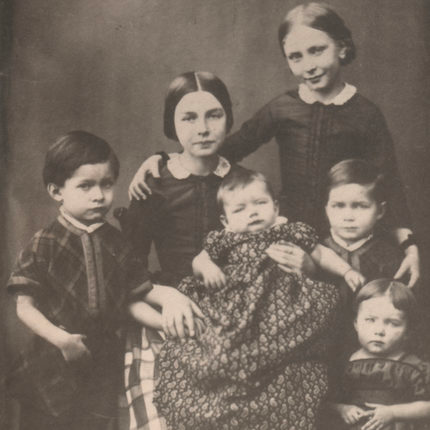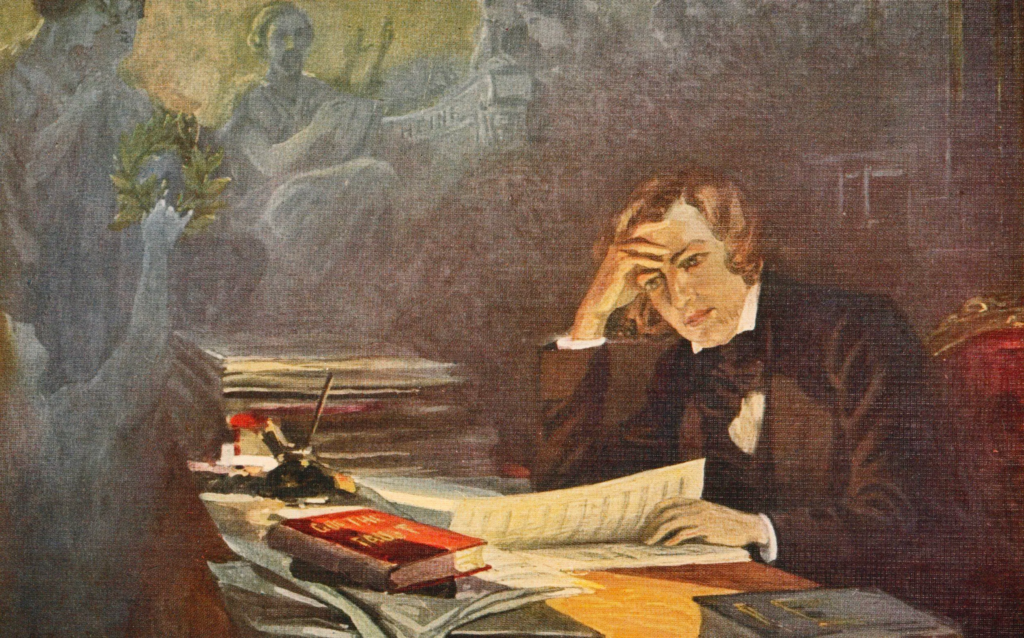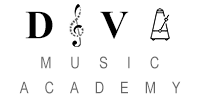Robert Alexander Schumann1810 – 1856
To me, Schumann’s memory is holy.
The noble, pure artist forever remains my ideal.
Johannes Brahms (1833-97)
If Schumann was living now, most probably he had been diagnosed as bipolar and maybe that could have saved him from a lot of problems and why not, living more than 45 years!
Just as Mozart and Beethoven dominated the musical scene in the late 18th and early 19th centuries, Mendelssohn and Schumann were the standard-bearers until 1850.
Schumann’s personality and career exemplify musical Romanticism: his moody nature, fluctuating between exuberance and deep depression; his prolonged struggle to win the hand of his adored Clara; his receptiveness to literary stimuli, his obsession with numerology and secret ciphers, and finally his collapse into madness and early death, possibly as a result of syphilis (which, together with tuberculosis, put a premature end to many a flourishing Romantic talent).

Schumann was born in Saxony on 8 June 1810, in a house close to the market place in Zwickau.
Robert’s father, August Schumann, has prospered as a grocer and then ran a successful book selling business, Bruder Schumann. Many of the pocket-sized books which he published can now be seen at the birthplace museum. He also translated works by Walter Scott and Byron, wrote novels and published a Who’s Who of “the Most Celebrated People of all Nations and Times”. He had married a surgeon’s daughter who was “much addicted to that kind of romantic sentimentality which is only found to perfections in minds of a thoroughly
commonplace type”.
Robert, their youngest child, received his main schooling at the local high school of about 200 boys. One of the schoolmasters taught him the piano, and. He showed a precocious ability at extemporisation and composition; aged eight, he wrote a little set of dances; four years later, he set the 150 Psalm for voices and orchestra. Around this time, he inscribed a book of a school friend: “Everything can be bought with money, except friends and happiness; when you read these lines, think of your true friend….Robert Schumann”.
While still a schoolboy he began to compose music, and also to write articles and drama. He formed a society for the study of German literature, and in the novels of Jean Paul he found a role model. He then decided that the best way to cope with his extremes of mood was to think of his personality as two different people; he invented two imaginary “companions” called Florestan and Eusebius. They were opposing characters, Florestan outgoing and passionate, Eusebius thoughtful and inward-looking. Schumann used them when writing his reviews-he would describe their “conversations” about new pieces; they also crop up in his
piano pieces – Florestan in the extrovert bits, Eusebious in the introvert bits.
While studying law in Leipzig he began to take piano lessons with Friedrich Wieck, whose nine-year-old daughter Clara was showing extraordinarily precocious talent as a pianist.
By now Schumann had decided to follow a career in music. For that, Schumann
experimented with mechanical devices to develop his hand positioning and finger strength.
These were quite common when teaching the piano at the time. Later in the century Saint-Saens also used such a contraption, a small electrical device which would send a current from shoulder to finger.
Shumann’s device was possibly a DIY version made out of one of his cigar boxes. It kept his fourth finger straight while he practised with the remaining fingers. The effect was crippling (Possibly the problem with his fingers was a consequence of mercury treatment for syphilis. Clara attributed it to practice a stiff dumb keyboard). He tried all sorts of remedies, including immersing his hand in the blood of a freshly killed ox, a cure tried by Clara when she hurt her wrist a third of a century later. But much to his disappointment, his injury finished the prospects as a concert pianist and he had to restrict himself to composing. His disability enabled him to avoid military service, however.



Early years
By 1832 Schumann had published two major piano pieces: the Abegg Variations, based on a waltz theme derived from the name of a girl who had taken his fancy, and Papillons (Butterflies), a set of pieces linked by events at a masked ball described in a novel by Jean Paul.
In 1834 he founded the influential music periodical Neue Leipziger Zeitschrift fur Music, which he used to promote new musical talent, including Brahms and Chopin. He also used its pages to fight artistic philistinism (a person who is guided by materialism and is usually disdainful of intellectual or artistic values) by way of an imaginary society, the Davidsbund, or “League fo David” (named after the vanquisher of Goliath), whose members were given fanciful names: Schumann himself was either Florestan or Eusebius; Clara Wieck was Chiara or Chiarina; her father was Master Raro, and Mendelssohn was Felix Meritis. These names appeared in Schumann’s set of 18 “characteristic pieces” for piano, Davidsbundlertanze (Dances of the League of David, 1837).
Clara
In Leipzig, Schumann was at the centre of the rich musical life. Distinguished musicians passed through, and Mendelssohn was the conductor of the Gewandhaus orchestra.
Wieck’s house was an important meeting place for musicians. There, Schumann often saw Clara.
Schumann’s doctor said that he needed a wife. In summer 1834 he had a romance with Wieck’s 18 years old student Ernestine von Fricken, who was the daughter of a Baron.
Ernestine came from a little town called Asch. Shumann was fascinated by the potential for making musical themes out of words. He composed some variations using the musical letters ASCH (A, E flat, C and B natural). These were developed into Carnaval: Scenes Mignonnes sur Quatre Notes.
Robert and Ernestine were secretly engaged, by he broke off the engagement when he discovered that she was only the illegitimate daughter of a Baron.
By the time the love affair with Ernestine came to an end, Shumann transferred his affections to Clara Wieck, by now a delicate, dark-haired beauty of 16. The sonata in F sharp minor was inscribed “To Clara from Florestan and Eusebius”.
Clara’s father forbade Schumann to contact Clara. Then began a six-years battle between Wieck and the two lovers.
Eventually, the situation became so unbearable they took Wieck to court, and asked the law to give them permission to marry. They won the case, Wieck went on the sulk for years on end, and it was wedding-bells time for Robert and Clara. He was thirty and she was 21 a day after her wedding.
Thus began one of the most remarkable musical marriages in which both husband and wife tried to combine family life with successful, independent careers. Clara Schumann was one of the greatest pianists and composers of her time, although as a woman she didn’t have the reputation of her husband. Some people say that some of the pieces with his signature were written by Clara but that cannot be proved.
In any case, Clara stimulated her husband’s creative imagination, acting as muse, confidant and critic.
It was Clara who encouraged Robert to try his hand at larger-scale works. These included concerts for piano (the popular A minor Concerto was written for her), violin and cello; four symphonies, and other symphonic works including the exuberant Konzertstuck for four horns and orchestra and the Manfred overture, inspired by Byron.
His large-scale vocal works include the secular oratorio Das Paradies und die Peri (1843), one opera, Genoveva (1850) and choral music including Scenes from Goethe’s “Faust” (1853).
The end
In 1843 the Schumanns were reconciled with Friedrich Wieck, no doubt anxious to see his first grandchild.
By 1849, when a revolutionary insurrection forced the family temporarily to flee Dresden, Schumann was becoming disillusioned by his failure to find a real job, and in 1850 he accepted an offer to become municipal music director in Dusseldorf.
Years in Dusseldorf were marked by failing health and mental instability, which adversely affected his abilities as a conductor and caused increasing problems with his employers. He became obsessed with phenomena such as table-turning, and suffered aural and cerebral disturbances. Among the highlights of his later years were his meetings with the young Johannes Brahms, who became a very good friend of the family and supported Clara after Robert’s death. There are rumours about love affair between Brahms and Clara which were never confirmed although some love letters by Brahms to her survived.
Schumann hailed Brahms in his magazine as a musician of the future, and the violinist Joachim, for whom Shumann wrote his Fantaisie for violin and orchestra and the Violin Concerto. Among his last compositions were the Phantasiestucke (Fairy-tales, 1849) for clarinet, viola and piano, and five Romances (1853) for cello and piano.
Schumann’s mental faculties finally gave way completely in February 1854, and he began to experience hallucinations.
After a failed suicide attempt, he was committed to an asylum. During the two and a half years in which he was incarcerated there, he was not allowed to see Clara but Brahms visited him some times. She was finally summoned to his bedside two days before his death on 29 July 1856. He was only 46.
Clara was travelling all over Europe to give concerts, with her last performance in Frankfurt at the age of 71.
She had performed nearly 1.300 programmes, some of them jointly with her daughter Marie.
